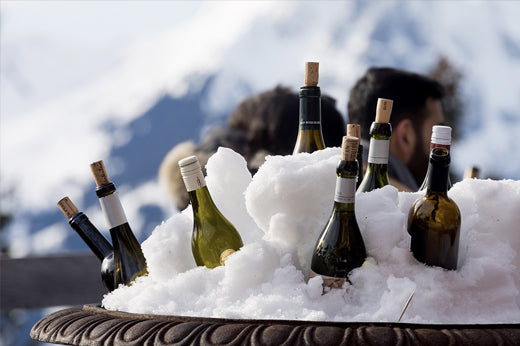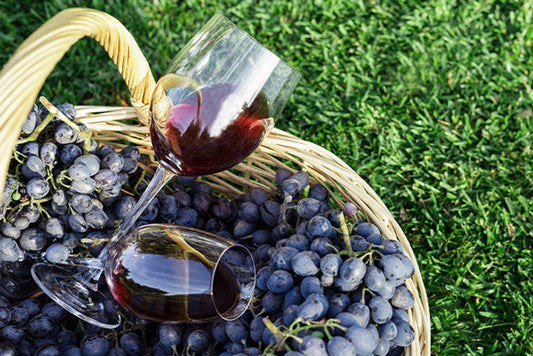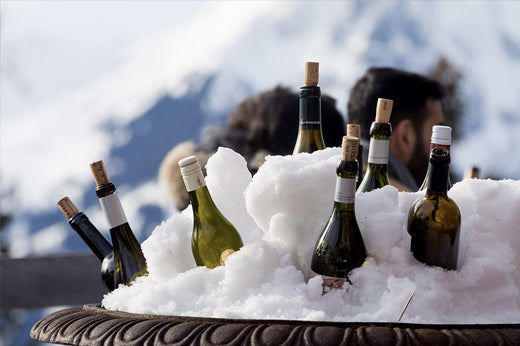
How Cold Benefits Grapevines in Winter and Wine
We all know how shipping wine during freezing winters damages wine. The same cold is beneficial for grapevines. All plants have their own life cycle, and grapevines are no different. While a vineyard might not look as pretty in the winter, grapevines need a dormant season. The winter allows vines time to rest, recover, and prepare for the next season’s growth.
Sufficient cold temperatures during the winter result in healthy vines and higher quality grapes at harvest.
Grapevine Perennial Growth Cycle
Grapevines belong to the class of plants called perennials. This means they continue to grow for more than two seasons. Plants that grow only a year or two are called annuals. Perennials have structures built for winter survival. In the grapevine, these are the woody rootstocks.

The grapevine’s annual cycle starts with new spring growth. The vine flourishes in the summer, followed by harvest in the fall. After harvest, growth drops significantly, the leaves fall, and the vine enters its dormant stage.
Grapevine Winter Dormancy
Winter dormancy is critical for grapevines to prepare for renewed growth in the spring. Lower temperatures and shorter days of sunlight trigger dormancy. These changing conditions signal the vine to stop actively growing.
As long as cooler weather comes gradually, vines have time to adjust. When growth slows down, internal regulators inside the buds help the plant adapt to cooler temperatures.
Abrupt and severe weather changes can cause damage to vines and reduce crop yields in the next harvest. Vines should be protected from extreme temperature variations in the winter.
Once grapes are harvested, vines begin building reserves of carbohydrates, storing them in the woody parts of the plant: roots, trunk, and cordons. When reserves reach the right level, the vine’s leaves change color and eventually fall off.
The carbohydrate reserves help the plant overwinter and provide food for growth in the spring. Vines without adequate reserves will experience weak shoot growth.
Protective Cold Temperatures
Grapevines need a certain amount of time under cold temperatures. Ideal temperatures below 40 degrees lead to successful bud break in the spring. The cold weather protects and keeps buds from emerging too early, even during a short warm spell.
During the dormant period, vines reduce the water in their tissues and accumulate sugars and protein complexes. These actions protect the vine from icing up during freezing temperatures.
Rapid temperature drops before true dormancy, while the vine is still moving water, can split the trunk if it freezes. An injured trunk can seem fine early in the season but can collapse later on.
Cold-injured or dead buds impact the trunks and canes by preventing water flow in the plant in the spring. Vines can recover from some moderate bud injury, but growers should monitor conditions to avoid severe damage.
Warmer winters resulting from climate change may create trouble with growth and flowering, impacting the crop’s quality and yield. If temperatures rise too early, the vine cannot adjust back to colder temperatures. A late winter warm spell could trigger buds to break early, risking frost damage.
Grapevine Pruning
After the leaves have dropped, growers prune vines for the next season. Growers prune vines to manage yields and train and shape the canes to optimize fruit ripening. But even more critical, pruning helps control disease.

Cutting back the plant’s growth at the end of the season resets the vine for the future. Pruning is best done when the vine is in the dormant phase. When the plant stops actively growing, pruning is more effective and less risky.
Pruning vines late in the winter allows growers to delay the onset of spring growth. This reduces the risk of late-spring frost or shatter resulting from high winds during bloom.
Pest and Disease Control in the Vineyard
Cold winters suppress pest populations, reducing pest and disease risk when the growth cycle starts again. But, as climate change increases temperature variability and milder winters, the risks of more pests and diseases increases.
Rainfall
In many locations, winter is an essential time for rainfall. Winter rains replenish and clean vineyard soils and reduce water stress in the spring. Sufficient water reserves nurture healthier vines.
Winter: A Beneficial Time for Grapevines and Wine
Without a good dormant period, a grapevine will not function at an optimal level to produce quality wine grapes. So, open a good bottle of wine while we’re still in winter and toast the season’s benefits.





